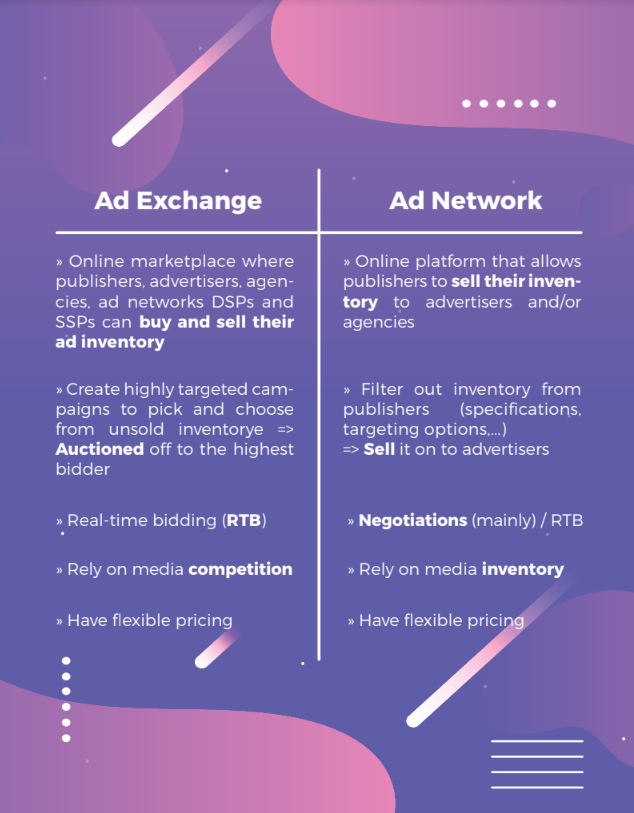Nowadays, mobile monetization is more and more developing than ever before, which require an increasing skill in dealing with ads. Therefore you, publisher or advertiser, need to research to find your most suitable ad platform to buy or sell inventory.
So, here’s the biggest question, which platform should you choose for your business’s evolution, Ad Exchange or Ad Network?
Say no more, here’s a complete comparison between Ad Exchange and Ad Network from us. Consider the table below for more information:
What is an Ad Exchange?
Ad Exchange appeared as a way for advertisers creating highly targeted campaigns to pick and choose from this unsold inventory, which is auctioned off to the highest bidder. This process is usually done with via real-time bidding and is carried out automatically. Probably the most well-known Ad Exchange is Google’s DoubleClick Ad Exchange, other include AOL’s Marketplace, Microsoft Ad Exchange, and more.
Simply, Ad Exchange acts as an online marketplace that gives advertisers and publishers opportunities to buy and sellad inventory. AdExchange usually divides ads into categories, so it is easier for publishers to determine which ads are suitable for their inventory (digital ad formats, native desktop, and mobile ads, etc).
What is an Ad Network?
Similar to ad exchange, ad network is a place to store ads, but ad networks are accountable for collecting inventory from publisher websites and then selling those to diverse advertisers. Specifically, ad networks filter out inventory from publishers according to specifications and targeting options, allowing advertisers to target specific audiences base on age, gender or location.
For example, Google with Adwords worth the throne of the most powerful advertising network. There are also numerous independent networks, but also other huge networks such as AOL’s Advertising.com, Bing Ads, etc.
The Difference Between Ad Networks and Ad Exchanges
Is the barrier between the two too thin? Well, if definition is not enough for you, here’s a thing to spare: An ad exchange serves as a marketplace, which allows the purchasing and selling of media ad inventory from other ad exchanges and ad networks. This indicates that ad networks, buy inventory from ad exchanges as well.
Another contrast is the method of pricing. Ad exchanges apply real-time bidding (allow advertisers to purchase ads across multiple sites all at once), which rotates automatically around the competition. However, ad networks use negotiations to buy directly with specific publishers, this make ad networks relied on specific media inventory.
Here’s an illustration for you: Ad networks are more of a one-way road, collecting inventory from publisher and then sell to earn percentage. Meanwhile, ad exchange are like a transparent two-way road with multiple access, preparing the ads so publishers can sell and advertisers can buy (as price impressions are viewable).
Summary
Ad networks:
- Online marketplace where publishers, advertisers, agencies, ad networks DSPs and SSPs can buy and sell their ad inventory
- Create highly targeted campaigns to pick and choose from this unsold inventory, which is auctioned off to the highest bidder
- Negotiations/Real-time bidding
- Rely on media inventory
- Have flexible pricing
Ad exchanges:
- Online platform that allows publishers to sell their inventory to advertisers and/or agencies
- Filter out inventory from publishers according to specifications and targeting options, and then sell on to buyers
- Real-time bidding
- Rely on media competition
- Have flexible pricing
If you find this post provides you with useful information, please support us by completing our survey and get free access to our “ASO: App Store Optimization Vol.1 ” E-book. We appreciate your time and support.
Thank you and have a nice day!.
For more articles on Ad Exchange, please find it here.


